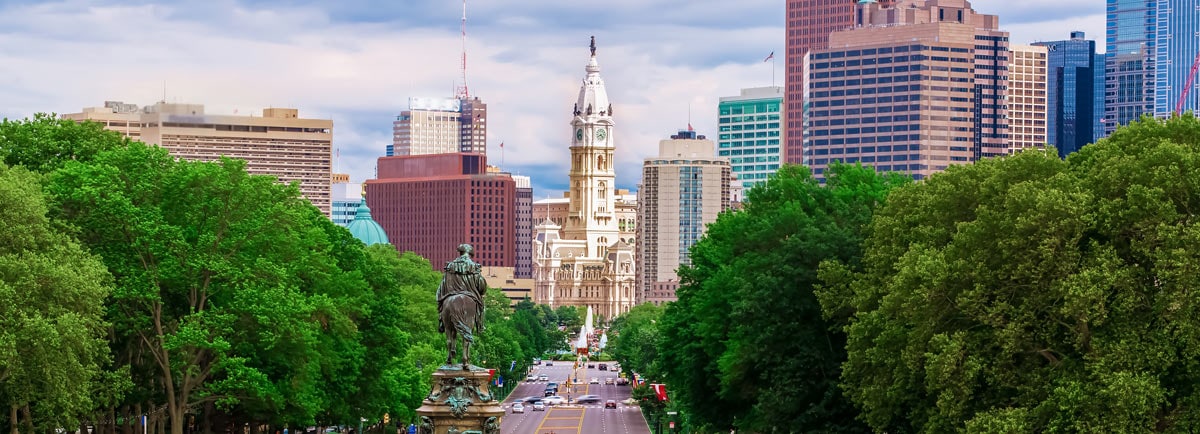
Go World Travel is reader-supported and may earn a commission from purchases made through links in this piece.
Philadelphia, the largest city in Pennsylvania, is the birthplace of American democracy. Replete with colonial history, rich in art and culture, the City of Brotherly Love is an ideal tourist destination.
Spring, early summer and fall would be the optimal time to visit with perfect weather, parks filled with cherry blossoms and lesser crowds.
Combine it with a trip into the surrounding countryside for a splendid vacation.

Learning About the City of Philadelphia
Philadelphia was founded by William Penn, a Quaker, after he reached North America in 1682 and established the colony of Pennsylvania. Penn’s aim was to set up a peaceful community free of persecution based on Quaker ideals.
His city planning ideas of a grid pattern with public squares in each quadrant became the basis of many future American cities. Our hotel faced Rittenhouse Square, one of the four green spaces designed by Penn about 350 years ago.
Interestingly enough, the first change to Penn’s plan was brought about by the construction of the Benjamin Franklin Parkway in 1917 when Paul Philippe Cret and Jacques Greber began creating the tree lined boulevard following the City Beautiful movement, rooted in the Beaux Arts style of France.
And so I enjoyed the distinctive Parisian feel of walking on the Champs Elysees as I and my husband ambled along the parkway on a lovely Spring morning. We crossed sculptural fountains, monuments and Beaux Arts styled buildings as we strolled along the leafy path.
The Free Library of Philadelphia, built in the French Louis XV classical style of buildings along the Place de la Concorde in Paris was worth gawking at.
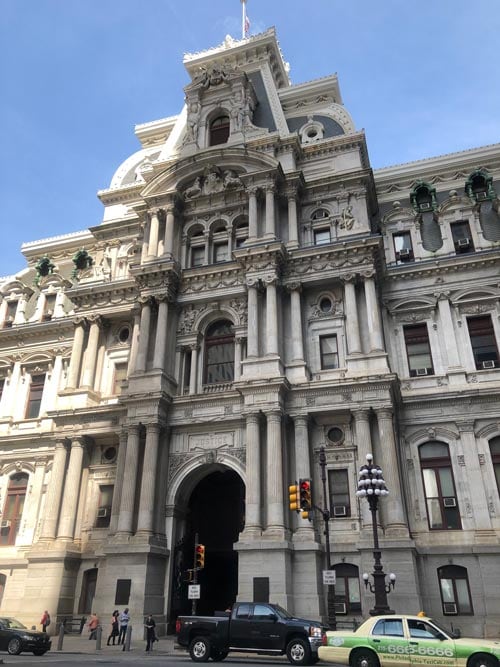
Philadelphia City Hall
We were headed towards Philadelphia City Hall, a sumptuously glorious marvel, reminiscent of a wedding cake that can stop you in your tracks. Built from white marble, brick and limestone, it is the world’s largest free standing masonry building.
The French Second Empire Baroque styled building with around 700 rooms that occupies the center of Penn’s city plan of 1682, also used to be the world’s tallest structure upon its completion in 1894.
Upon reaching, we followed other visitors and looked upwards to get a glimpse of Penn’s bronze statue adorning the apex of the clock tower.
Sculptures are aplenty at City Hall, more than 250 to be exact and all built by Alexander Milne Calder, the grandfather of the famed 20th century sculptor, Alexander Calder.
Looking skywards, I noticed four gigantic bronze sculptures and four huge bronze eagles decorating the four corners of the building facade.
The base of the building is constructed out of solid granite, and standing in that cavernous space with colossal columns bedecked with heavily carved capitals made me think of the insides of Egyptian pyramids that I had seen in many films and documentaries. Check out tours here.
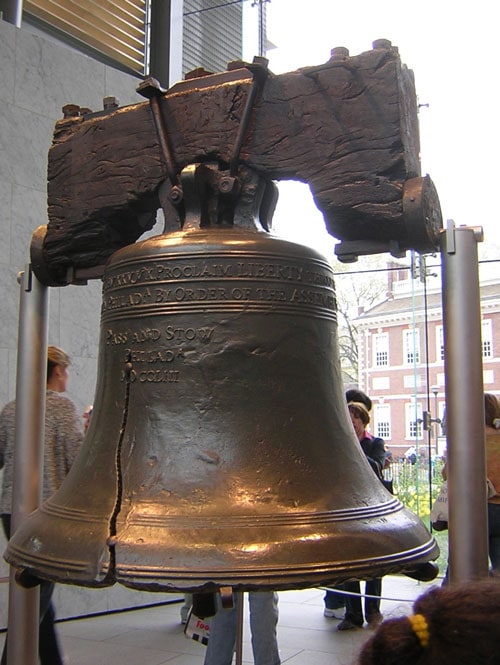
An Insight into the History of Philadelphia
Begin your exploration at Independence National Historic Park, the prime city landmark which is free to visit. A stroll around the park will take you past notable buildings and monuments, each of which played a part in the founding ideals of the United States.
The first must stop here is Independence Hall, a UNESCO World Heritage Site. In 1776, the Declaration of Independence was signed here by the delegates of the original thirteen colonies and the U. S. Constitution was signed into law here in 1787.
The building itself is a sedate, early 18th century Georgian mansion with a spire that belies its importance as “the birthplace of American Government”.
Our walk along the beautiful lawns took us past the Old City Hall, the site of the U. S. Supreme Court till 1800; the Museum of American Revolution, where visitors can participate virtually in the historic events of that era; the American Philosophical Society founded by Benjamin Franklin in 1743 and the First and Second Banks of the U. S.
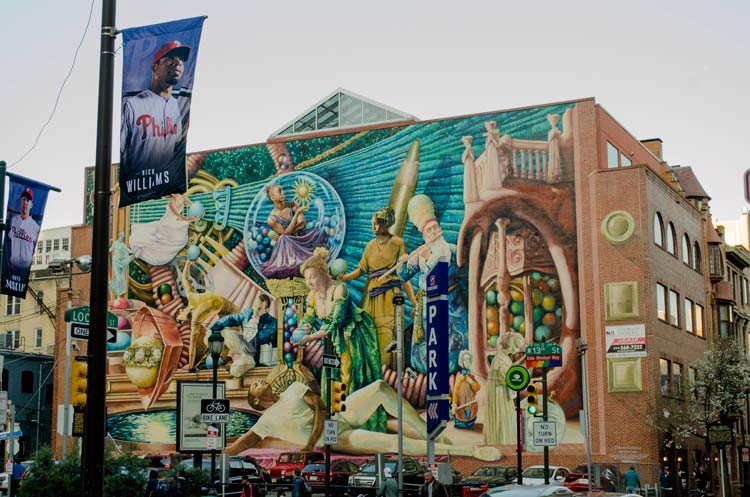
National Constitution Center
We entered the National Constitution Center (paid for tickets required), an extremely worthwhile stop where we immersed ourselves into exhibitions and interactive programs about the U. S. Constitution.
The popular Signers’ Hall was delightful as we walked among the life size statues of the Founding Fathers where the exhibit reconstructed the final day of the Constitutional Convention on September 17th, 1787.
Another iconic monument to visit in the park is the Liberty Bell, known as the symbol of American independence.
The Liberty Bell Center’s magnificently modern, glass walled building overlooking Independence Hall, provides the perfect backdrop for the display of the distinctly cracked historic bell that was once atop the Hall.
As noted in the Visit Philadelphia website, the bell that was rung at the first reading of the Declaration of Independence was “adopted as the symbol of freedom by abolitionists, suffragists and other groups.”
About a 10 minute walk from the Liberty Bell Center, is the Betsy Ross House, which elaborates on the history of the first American flag.
Betsy Ross, born Elizabeth Griscom in 1752 is considered to be its designer. Considered, because the proof lies in the oral history provided by her family members. Nevertheless, historians agree that she might have designed the Stars and Stripes because she designed flags for over 50 years.
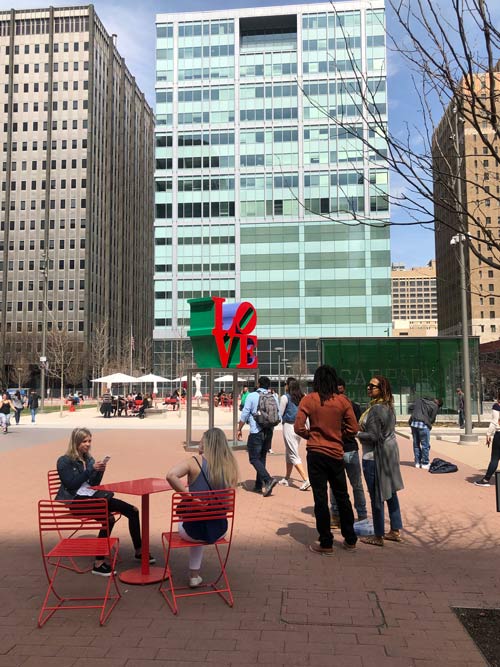
An Ode to Love
A Philadelphia visit is incomplete without an experience of its iconic Love sculpture. To see this, you have to go to the John F. Kennedy Plaza, famously called the LOVE Park near the City Hall.
Created by sculptor Robert Indiana in 1964 first as a painting, he built it in aluminum to display it as a part of U. S. Bicentennial celebrations in Philadelphia in 1976.
The sculpture started out in dashing red, blue and green colors, but the color scheme was later changed to red, green and purple, the original colors used by Indiana and discovered through archival photographs.
Not too far away from the LOVE Park is the Sister Cities Park where we viewed the AMOR sculpture, also built by Robert Indiana and placed there in 2016.
The sculpture, meaning love in Spanish and Latin, commemorated the historic trip of Pope Francis to Philadelphia in 2015 and originally graced the iconic steps of the Philadelphia Museum of Art.
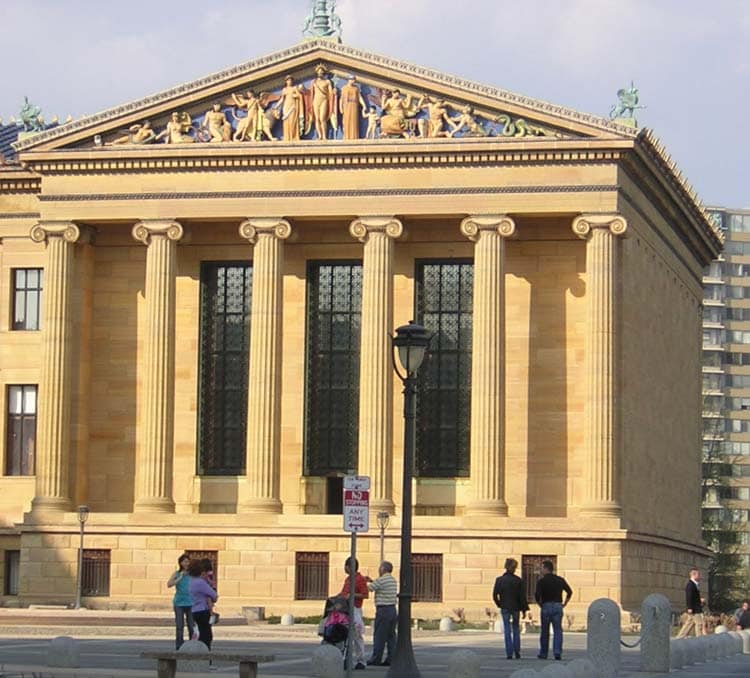
Visiting the Museums of Philadelphia
Philadelphia is home to world class museums that range from the amazing to the eccentric. For a first time visitor or a returning tourist, a trip to the Philadelphia Museum of Art is a must.
The imposing building rose loftily on the horizon as we approached it via Benjamin Franklin Parkway. As the third largest art museum in the country, it holds an exceptional collection in more than 200 galleries.
There are eight departments showcasing American masters, European art, furniture and textiles, South Asian art and more.
Some main draws – the most extensive collection of works by the French painter Marcel Duchamp, the collection of sculptures by Constantin Brancusi, the best outside of Europe, a wonderful compendium of works by self taught artists and important creations by Black, Indigenous, Latin American, Shaker and Pennsylvania Dutch artists that celebrate Philadelphia. And lastly, once you have completed your visit, click a selfie on the famous Rocky steps.
The renovations done by star architect Frank Gehry which was opened to the public last year, has transformed the gargantuan interiors, bringing in lots more public space and improving accessibility while preserving the original iconic architecture.
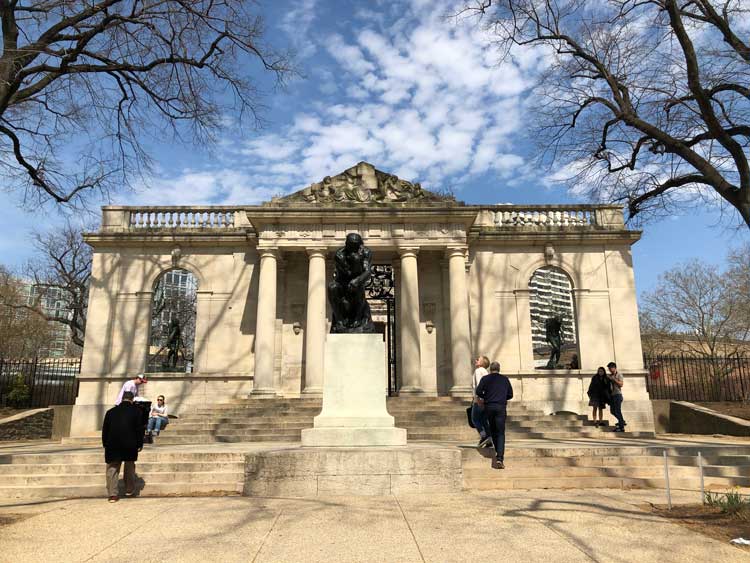
More Interesting Philadelphia Museums
Along the Franklin Parkway is also the diminutive but impressive Rodin Museum, with the largest collection outside France, of sculptures by Francois Auguste Rene Rodin (1840-1917), often considered to be a pioneer of modern sculpture.
The museum was conceived by Jules E. Mastbaum, a prolific collector of Rodin sculptures, marbles and drawings who fell in love with the artist’s works during his Paris visit in 1924.
Sadly, Mastbaum died early and the museum was constructed and opened in 1924 under the guidance of his wife and daughters.
Next door is the Barnes Foundation, founded by art collector Albert C. Barnes (1872-1951) in 1922. Barnes was a visionary and a champion of social justice who forever changed the way of looking at and experiencing art.
The museum displays his collection strictly according to his specifications and so you will see a Picasso or a Matisse exhibited alongside everyday items and artworks by unknown artists.
The African American Museum in Philadelphia at 7th and Arch Street and established in 1976 on the occasion of the U. S. Bicentennial, is a Smithsonian affiliate.
It is the first museum in the country dedicated to celebrate, interpret and preserve African American culture and heritage which is elaborated through impressive and rotating exhibits.
The Mütter Museum of the College of Physicians of Philadelphia can be considered an off the beaten track attraction.
Its spectacular collection of items are related to medical history, all of which were donated by Thomas Mütter, a Philadelphia physician, right before his death in 1859. And it is not for the faint hearted.
A walk through the exhibits will take you past skeletal forms, abnormal organs and body parts preserved in fluids and many other medical peculiarities and absurdities. But you will also be enamored by Marie Curie’s electrometer and other such items.
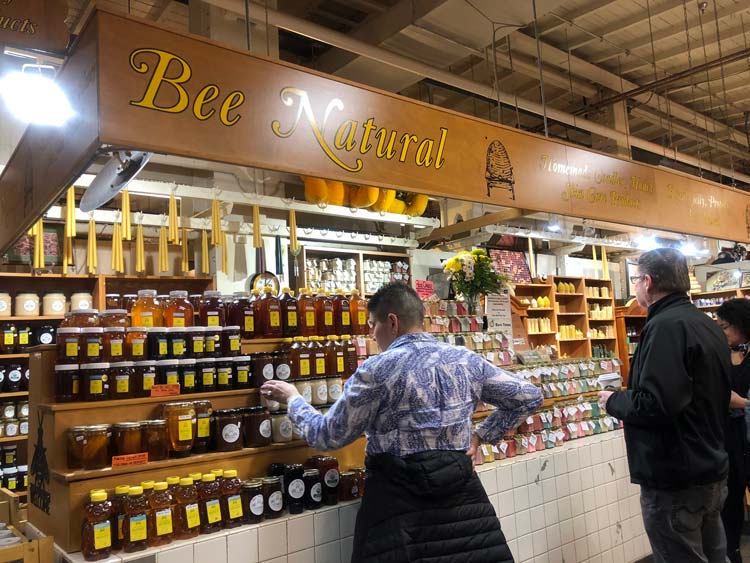
Enjoying the Reading Terminal Market
When hunger hits, head to the Reading Terminal Market at 51 N 12th Street, easily accessible from all tourist spots by public transport or even on foot if you so desire.
Located since 1893 in a former train shed, a National Historic Landmark Building, this indoor marketplace offers a smorgasbord of food items, both cooked and raw, ranging from fresh, local produce, to meat, poultry and seafood to delectable baked goods and confections to cookbooks and kitchen items to flowers. It is also the oldest and the largest public market in the United States.
Walk through the aisles filling your senses with visual and olfactory delights. While you may certainly decide to eat a meal at one of the many restaurants located here, there is also much to be said if instead you choose to create your own meal as you stop by the infinite number of stalls.
Pizzas, pastas, crepes and pies, cheeses and breads, soups, salads or sushi, Indian, Middle Eastern or Chinese, rows upon rows of baked delights, local Amish fares, and not to forget ice creams and drinks – the choices are endless and mind boggling.
Though beware, the lines can be long at lunchtimes as the market is immensely popular amongst both locals and tourists.
I was enamored by the varieties of popcorn being sold at Kauffman’s, a Lancaster County stall. Some unusual choices – buttermilk cheddar, banana crunch and toffee touchdown.
The sfogliatelle pastry with its numerous crispy and flaky buttery layers and filled with ricotta cheese and candied lemon as noted on the card at the Termini Brothers bakery stall looked enticing.
If on the other hand you plan to buy the raw materials to whip up a delectable meal, you can do so too. Though of course I could not buy any as we were staying in a hotel, I loved my walk amongst the aisles of fresh produce capped by a stop at the stalls of fish and seafood.
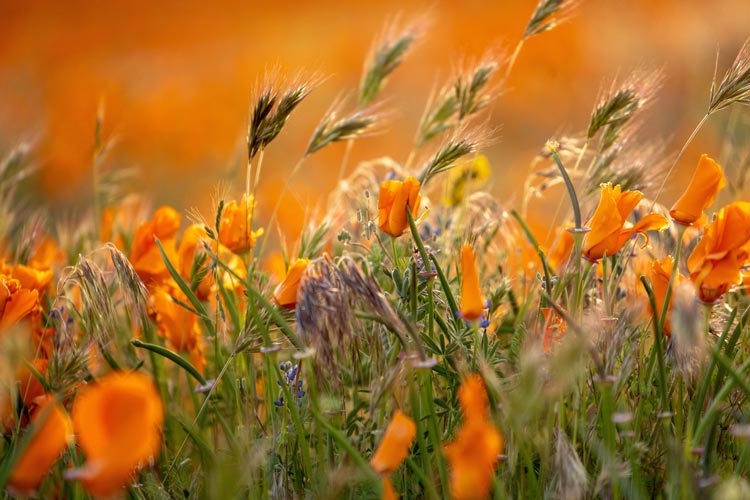
Exploring the Amish Countryside
Trade in the cityscape and the highways for the bucolic landscape of Pennsylvania Dutch Country, just about an hour’s drive away from Philadelphia.
We headed to Lancaster County, which is home to the Pennsylvania Amish, and is one of the oldest and largest such settlements in the country. Our sojourn took us into Bird-in-Hand and Intercourse, the quaint towns that attract many visitors in the summer season.
A drive through these areas will take you past rolling Amish farmlands and you will most certainly cross the charming black colored horse drawn buggies, which the Amish people ride as they go about town.
Visitors can also ride such buggies for an authentic experience and tour Amish farms and take part in everyday activities such as milking cows or gathering eggs.
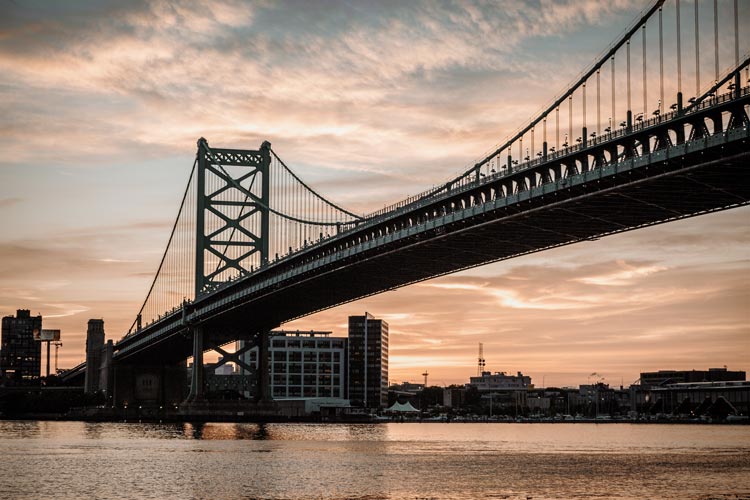
Sweet Delights in Hershey, Pennsylvania
Well known as the “Sweetest Place on Earth”, Hershey, PA is synonymous with the world of chocolate. At about an hour and a half’s driving distance from Philadelphia, a visit to Hershey is another excellent detour.
You can head straightaway to Hershey Park, filled with amusement rides. The park was opened in 1906 by Milton S. Hershey, the founder of the Hershey Chocolate Company, as a leisure getaway for his employees.
Next door is Hershey’s Chocolate World, where amongst the cornucopia of chocolate based treats and souvenirs, you can also watch chocolate being made.
If you want to know more about the history behind Hershey, The Hershey Story Museum would be the place to go to. The exhibits highlight the life and legacy of Milton Hershey and his pioneering entrepreneurship in chocolate.
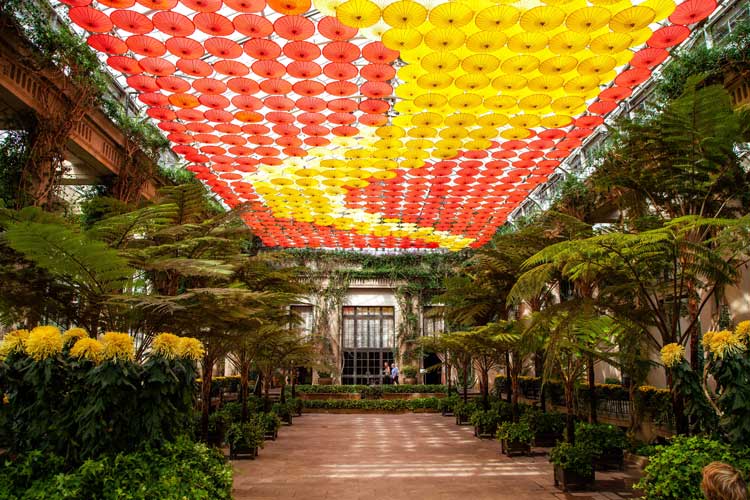
The Glorious Beauty of Longwood Gardens
A trip into Chester County, PA will take you to the glorious botanical haven of Longwood Gardens, about an hour’s drive away from Philadelphia.
The garden’s history begins in the 1800s when an arboretum was established by Samuel and Joshua Peirce. It was bought in 1906 by Pierre S. du Pont, who further elaborated it into a horticultural showstopper.
Each season brings in a different form of splendor. Spring and summer are certainly the best time to visit with tulips, azaleas, cherry blossoms, roses and lilies in spectacular bloom.
The dancing, musical fountains, the many indoor and outdoor gardens, the conservatories showcasing orchids, fruits, tropical plants and more make it a premier attraction.
Information on all tourist sites and the latest COVID-19 protocols can be found at: https://www.visitphilly.com/
Book This Trip
Start planning your Philadelphia culture-packed trip to the city of Brotherly Love today. Get prepared with insider tips on the best sights, hotel and VRBO accommodations, local restaurant reviews and more through TripAdvisor and Travelocity.
Plan even more fun by booking some unique Philadelphia activities, expert-led tours, foodie adventures and skip-the-line tickets through GetYourGuide. Find more information and book your dates in advance here.
For exclusive flight discounts, car rental options and vacation packages, check out CheapOair.
Author Bio: Susmita Sengupta, an architect by background from New York City, loves to travel with her family. Her articles are published in many digital travel magazines including at Go World Travel.
- Life of a Champion: Exploring the Muhammad Ali Center in Louisville - April 19, 2024
- What It’s Like to Live as an Expat: Lake Chapala, Mexico - April 18, 2024
- Top 5 Spots for Stargazing in North Carolina - April 17, 2024
